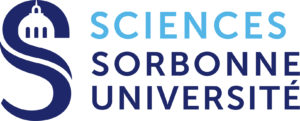Post-doctoral position in soft matter : 18 months starting from March 2024
Keywords : biomimicry, protein self-assembly, adhesion, surfaces, biomaterials.
Context : In our daily lives, conventional man-made adhesives are petrochemical products, which are toxic for the body and show limited efficiency in wet conditions, major drawbacks for biomaterials. In this project, we aim at testing bioadhesives in air and/or in wet conditions inspired by natural glues of some arthropods. This approach using simplified mimics of bioadhesives will facilitate better understanding of systems from which they are derived and could find applications in medicine as well as in biotechnology and industry.
Adhesive proteins of some arthropods have been identified and produced by our partners of the IMBM team of the “Materials and Physical Engineering Laboratory” (LMGP, UMR 5628) in the Grenoble Institute of Technology (http://www.lmgp.grenoble-inp.fr/), in coll. with “Equipe de Recherche sur les Relations Matrice Extracellulaire-Cellules” (ERRMECE, EA1391) of CY Cergy Paris University (https://errmece.cyu.fr/). For these animals, the adhesion mechanism seems to be related to specific sequences of amino-acids that involve protein self-assembly on the surface. Some molecular basis of this process have been elucidated but its adhesion mechanisms remain to be studied. Using a genetic engineering method to produce protein models inspired by natural adhesive proteins, the aim of this project is to set up an adhesion characterization method to understand the link between the process of self-assembly of proteins and their adhesion performances.

Figure 1. Mimics of bioadhesives from barnacle model. a. Self-assemblies made of a recombinant protein derived from barnacle model : protein fibers observed by AFM. b. Lap-shear assembly and effect of swelling degree on the adhesion performance, i.e. adhesion energy (J m-2), from Rose et al.
Missions. Quantification of adhesive properties of joints made out of the produced proteins (Fig.1a). This implies to design a test that requires small quantities of bioglue. At first, commercial biomedical glue will be used to set up the methodology : a variety of surfaces, several measurement configurations will be tested. The most promising ones are expected to be conventional lap-joint geometry (Fig. 2b) or tack-test. Adhesion tests will be performed under controlled environmental conditions (aqueous media) and in air conditions, since adhesion is expected to be tuned by both protein concentration and swelling conditions (pH and ionic strength). A specific environmental cell will be designed in order to measure adhesion under controlled conditioning (pH and ionic strength). By integrating this multidisciplinary project, the postdoctoral fellow will develop his/her knowledge natural protein self-assembly and master innovative technique for adhesion in biological systems.
Candidate profile. We look for a highly motivated candidate with a strong knowledge in adhesion or materials science or biomechanics or physico-chemistry. Adaptability, an enquiring mind, an enthusiasm for exploring new directions and a track record for delivering working solutions will be key attributes. Good presentational skills and an eagerness to publish and promote your research are essential. The position is available for 18 months starting from : March 2024.
The Laboratory and the team. The Soft matter science and engineering laboratory (SIMM, ESPCI Paris, Université PSL, CNRS, Sorbonne Université) combines competences in chemistry, physics and mechanics to develop a comprehensive picture of links between macromolecular architectures and their macroscopic properties. In this context, SIMM has developed an expertise during the last 10 years in designing gels and developing customized mechanical techniques (large strain behavior in tension mode and adhesion) optimized for characterizing gels. Note that the SIMM lab is hosting an experimental platform for multi-scale mechanical investigation of soft matter.
References
Rose S, Prevoteau A, Elzière P, Hourdet D, Marcellan A & Leibler L (2014). Nanoparticle solutions as adhesives for gels and biological tissues. Nature 505, 382–385. https://doi.org/10.1038/nature12806
Barthel E, Kerjan O, Nael P, Nadaud N (2005). Asymmetric silver to oxide adhesion in multilayers deposited on glass by sputtering. Thin Solid Films 473, 272-277. https://doi.org/10.1016/j.tsf.2004.08.017
Lembré P, Di Martino P & Vendrely C (2014). Amyloid peptides derived from CsgA and FapC modify the viscoelastic properties of biofilm model matrices. Biofouling (2014), 415-426. https://doi.org/10.1080/08927014.2014.880112
Contacts. Alba Marcellan ![]() or
or ![]() / Etienne Barthel
/ Etienne Barthel ![]()


